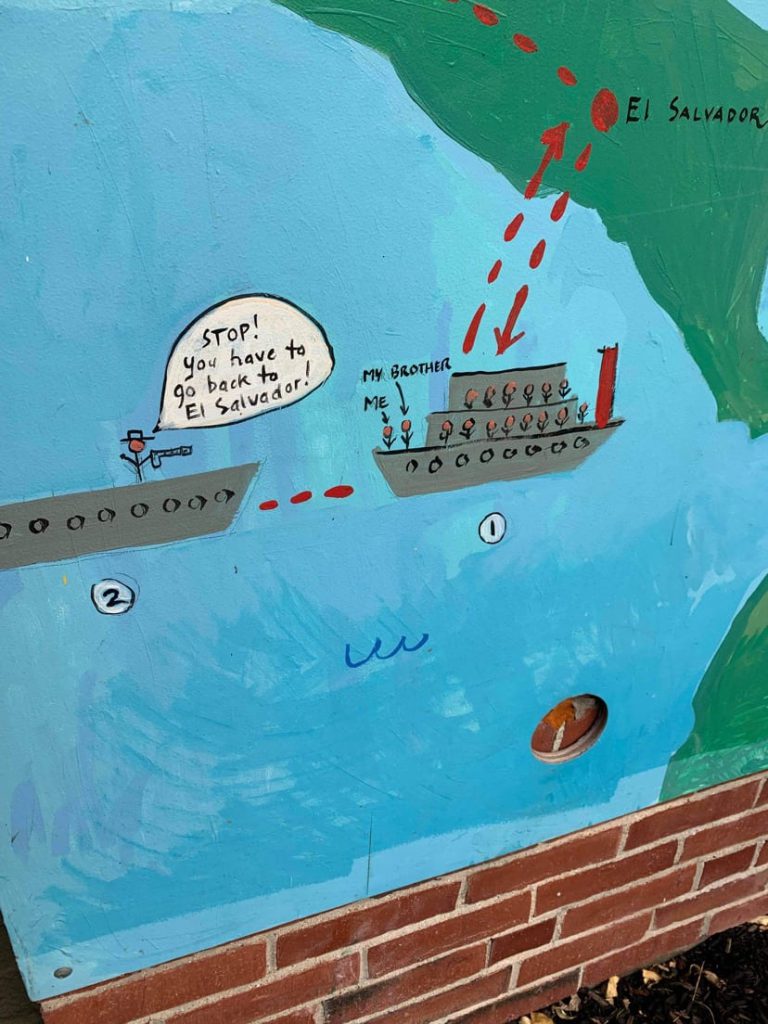“Go Back!” Immigrants constantly hear those words.
Having been born to Dominican parents, I greatly appreciate the sacrifices they made. In the 1960s, my parents traded poverty for assembly line work in New York City factories. Those sacrifices provided us with a doorway into the American dream and the opportunity to pursue higher education.
After my mother fled Brooklyn, New York, from domestic violence, she bought a one-way ticket to Boston, but she didn’t go without leaving a trail of poverty and violence that led us to the ghetto streets of Boston.
There was systemic racism in the education system, from used books from the 1970s to police cars parked outside of our school to remind us what society believes about us. But, thanks to good teachers who wanted to see me succeed, I overcame those obstacles by volunteering in after-school programs.
Having become a parent, I, too, wanted to give my children a better chance at higher education and a safe environment by moving to the suburbs. So my application for affordable housing led me to Lexington, Massachusetts.
Lexington ranks fifth-best public school in Massachusetts. I was fortunate to live in a community that valued education and welcomed diversity. One example is school buildings decorated with murals that represented students’ experiences. In addition, my daughter’s school, Bowman Elementary School, would hold a cultural appreciation day where you could learn about different cultures. In one educational experience, we discovered most of the flowers that we buy at the grocery store are grown in Colombia.
Now that my daughter is in Middle school, she was excited to learn that her summer program started in July at Bowman Elementary. On first arriving at the school, I spotted a welcome mural. I found it odd that I hadn’t noticed it before – like other parents, I had walked past it millions of times – but it was just now that it caught my attention.
The mural appears to be friendly and welcoming to immigrants arriving from Europe – but when I looked down at South America, I saw a white hand with the word, “BACK!” A man on a boat holding a gun with the words, “Stop! You have to go back to El Salvador!”

My mind was filled with a few questions:
Why haven’t I noticed this before?
How is this welcoming?
Who approved this?
The mural has been up for how long?
Why are immigrants from Europe more accepted?
Who was the artist?
What’s the back story?
At the time, I was disappointed, then angry that this was acceptable. “What should I do?” I asked myself. Whom should I contact? I was unsure if my voice counted, given the lack of Latino voices and representation in Lexington.
Nevertheless, I gave it a try and reached out to Lexington school superintendent Julie Hackett, Bowman’s principal, Jenny Corduck. I was relieved that Johnny Cole, Director of Equity & Student Supports, was open to meeting with me at the school to discuss the mural. We agreed that a fresh approach is needed to reflect students’ experiences and cultures.
I learned the mural created ten years ago showed students’ experiences with immigration. Without any context, it appears racist and insensitive. Yet, as the summer ends and the kids return to school, the mural remains. In my follow-up contact, school leadership told me it was on the “to-do list,” and they would have the mural removed – again, no timeline given and no sense of urgency. I believe if there were swastikas on the wall, removal would be immediate!
Like my parents’ job at the assembly line, the school had to fact check, find out what happened, talk it over internally before doing something about it. Ultimately, the outcome is to put it off for now – let it pile up and add it to their to-do list.
I learned that a voice could make a difference, but a movement can result when Latinos/immigrants unite. So, if you face a similar situation, please address it as soon as possible, let people know about it so that even in the suburbs, immigrant voices matter. Now, who’s with me?

Evelyn Brito is an experienced creative producer and screenwriter with over 15 years of experience in the entertainment industry.
Additionally, she is an event and marketing manager planning events, booking speakers, and engaging attendees.
Ms. Brito is currently the writer and executive producer of Bodega Makeover. Bodega Makeover is a bold reinvention of the makeover series featuring communities around the United States that have largely been left behind by chain groceries and retailers.
Bodegas and their owners are the soul and lifeblood of their urban neighborhoods. This series showcases their stories and thank them for being there when others weren’t by modernizing their storefront, helping to build relationships with new partners, and therefore breathing new life into the community.
Publisher’s Note: The views, opinions, positions, or strategies expressed by the author are theirs alone, and do not necessarily reflect the views, opinions, or positions of the MALN.
If you have an idea for an Opinion-Editorial piece, please send your ideas to Info@LatinoNewsNetwork.com for consideration.






